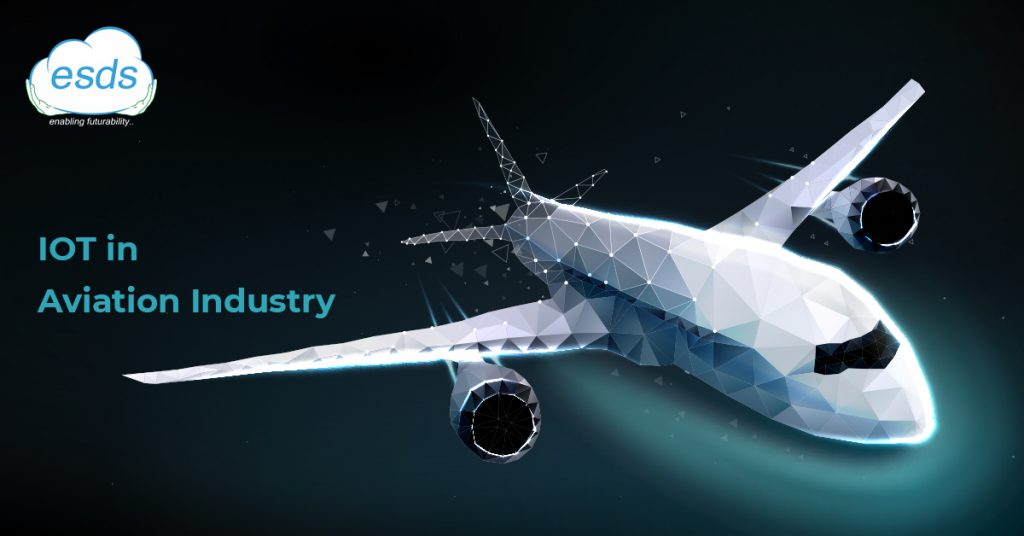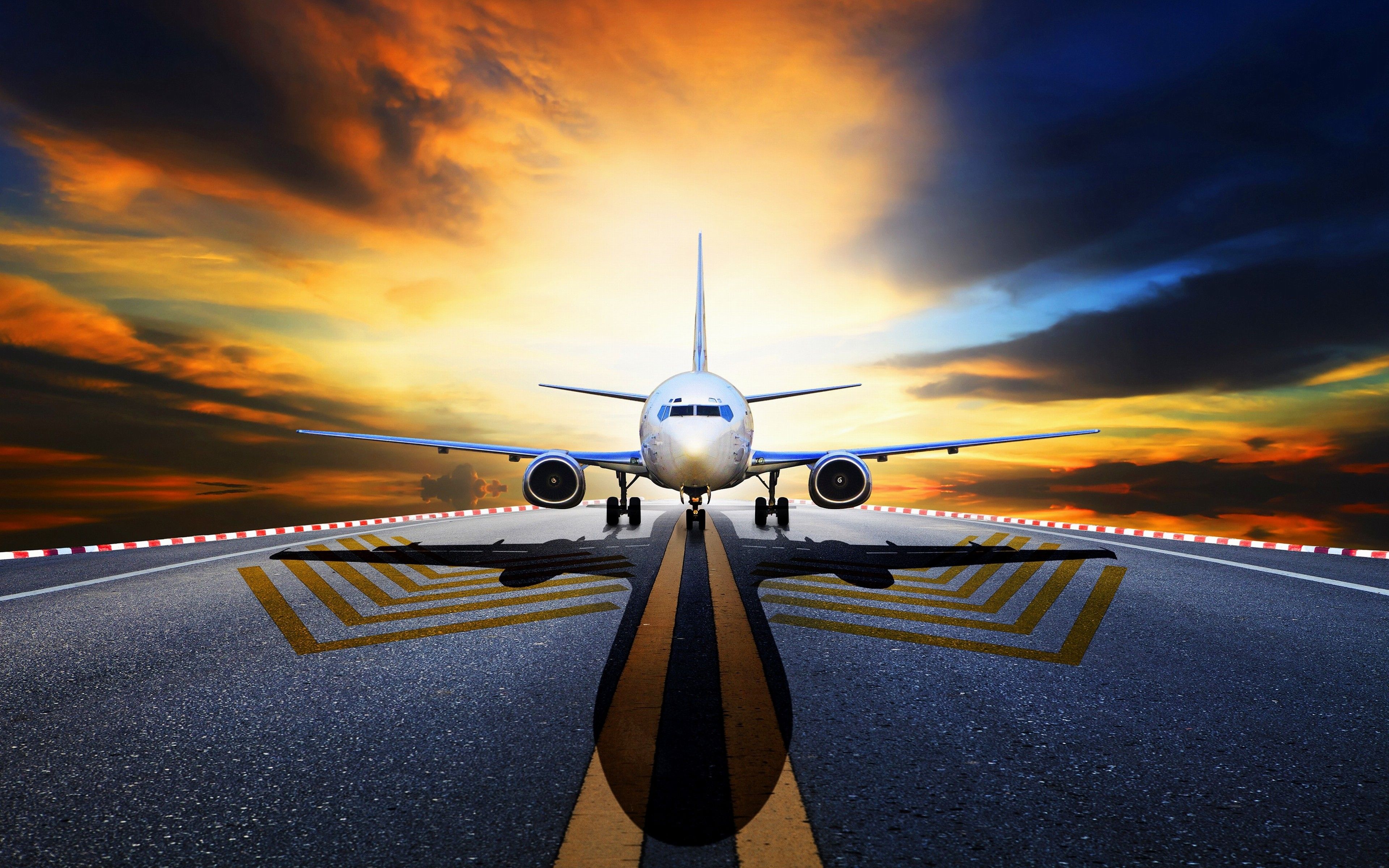IoT in Aviation Industry
With the inclusion of digital technologies, the airline industry has now been able to deliver unique customer experiences, simplified underlying processes, and most importantly enhancing the productivity of the workforce. The next stride in leveraging IoT can lead to the exploration of newer dimensions in the aviation industry. Combining IoT with other technologies like AI and robotics would generate a number of opportunities related to service delivery improvement. Further, a smart IoT ecosystem can bring in all the required entities and assets together in the industry value chain and make it look like the new normal.

Existing Technologies in Aviation Industry
1. Digitized Security
Today, state-of-the-art technology is being developed for implementing advanced concepts such as “walk through security” to reduce the passenger waiting times. Biometrics are also being used for automating the verification processes, thus reducing the burden of staffing.
Security systems are increasingly becoming a major technology trend at the airport terminals as these are equipped with the latest security system for security purposes.
2. VR for Last-Minute Changes
A leading global aviation company has been testing a new way for its passengers to upgrade their tickets by allowing them premium seats using VR. The airline company allows passengers to upgrade at the last minute. The airline company said that the best way for understanding the benefits of a premium economy, that has extra legroom and seat pitch can be done virtualized using VR.
3. Biometrics
Biometrics are being potentially used by the aviation industry for some time now and is gaining a stronghold across this industry vertical. Some of the biggest airports across the world have invested in fingerprint and facial recognition technology. The aviation industry emphasizes on using facial recognition so that the passenger’s face becomes the new passport. Also at various airports, biometric-based recognition is being implemented at the airport lounge entrance and integrating this technology with flight information display systems for serving the passengers with a higher degree of personalized information along with offers.
IoT Adoption Challenges
Following are some key challenges that are to be addressed for implementing IoT on a wide scale. These are inclusive of-
1. The aviation industry has a number of stakeholders and each of these stakeholders has own ecosystem that includes technologies and systems. Simultaneously most of the stakeholders are dependent on each other for carrying out smoother functionalities. As the adoption of IoT enhances, it becomes important for the airlines to extend their reach beyond the localized enterprises and look to work with those stakeholders that share a common vision of using IoT.
2. Most of the airline companies operate on a global level spread across diversified geographical boundaries. Each of these geographies has its own cultural diversity as well as technological adaptability. A successfully implemented IoT needs to support these regional variations.
3. The airline industry operates in a top-notched secure environment. Thus, security and privacy need to be the top priority for implementing IoT in the aviation industry. Privacy can also be seen as a critical issue whenever there is a deployment of advanced technologies such as facial recognition as an outcome of the large volume of passenger’s private data.
4. The technology ecosystem for major number of airline companies is hosted by a number of complex legacy systems and their supporting architecture. On the contrary, IoT as a technology is still at a budding stage with protocols related to communication and security still under the evolving stage. With this huge disparity in place, the industry needs to focus on mature techologies and look for the simpler technology components that can be easily integrated.
Opportunities for IoT in Aviation
IoT offers a number of tremendous benefits to the aviation industry and its rippling effects include- reduced travel times, enhancing the comfort levels of passengers with better security levels. In order to fully realize the IoT opportunities, the businesses and governments need to coordinate with the same frequency for answering the political as well as business issues related to IoT.
This disruptive technology holds several benefits when it comes to the aviation industry-
1. When sensors are embedded in connected objects, it can be used for controlling, monitoring and collecting accurate real-time data. Sensors have significantly improved over the past few years. Wireless can be a key driver behind the emergence of IoT devices that operate on Wi-Fi or a strong cellular network such as 5G. Using a low-power wide area network (LPWAN) could be used for enriching the performance of sensors that offer low bandwidth.
2. Cloud Computing can be used for creating a common platform for handling and integrating data from several sources like- people, their processes and their systems (devices). Real-time data can be utilized for gaining purposeful insights from current market data ad then distribute this information to the customers in a very short span of time. In the coming time, Cloud computing can en cash the growth chances offered by smart and connected markets. The companies in the aviation industry need to identify the potential use cases for improving the industrial operations and enriching better customer experience.
3. The airport terminals can duplicate the underlying concept of smart cities, thereby, implementing advanced technologies besides improved methods for collecting data to mine out the meaningful real-time insights. The use of sensor data could be done for improving operations and cumulative passenger experience. Multiple data sets can be integrated, optimized and analyzed for developing smarter applications and services related to airports, aircraft, and passengers.
4. Beacons offer tremendous scope for IoT gateways. These can be placed across the entire airport infrastructure for triggering notifications on the passenger’s mobile as soon as he is in the beacon’s range. These notifications could be related to time, flight status or even displaying an e-boarding pass on the passenger’s mobile. This, in turn, provides the passenger with more accurate information every time. This can even help the airline crew for determining how far is the passenger from the airline in order to determine how long they need to wait before the actual take-off.
Growth of Aviation IoT Industry
According to an online published report, the global aviation IoT market is estimated to reach $25.13 billion by the year 2025. In the period, 2019-2023 the industry is forecasted to witness a healthy CAGR of 16.34%. As per the report, the key growth drivers in the forecasted period include- the deployment of IoT by the smart airports for providing a delightful user experience along with compensating the losses incurred in the business.
Considering segment-wise growth, the fleet management segment can witness the growth at a CAGR of 16.06% in the forecasted period.
The component market growth comprises- communication services, devices, data centers are predicted to show a growth CAGR of 15.64% by 2023.
In terms of region, the Asia Pacific region can be seen as the fastest-growing region in the above-stated period. The growth CAGR is estimated to be at 18.4% and the key drivers of growth in the region comprise emerging demand for in-flight connectivity along with connected electronic devices and most significantly, heavy investments made in IoT solutions by the airport authorities and the airline operators.
The aviation industry has just begun the use of IoT technology. Considering the potential benefits that this technology offers, it can be used extensively used for revenue management, scheduling, predictive maintenance and most importantly enhanced passenger experience. The industry needs to deploy a methodology that gives them the authority of experimenting with newer emerging technologies in a progressive approach. IoT houses the capabilities that airlines need today and is going to play a significant role in the aviation industry to evolve itself into a cognitive organization in the future.
- Considering Data Centers in India to Overcome Economic Conditions - May 10, 2022
- Determining Why Your Organization Needs Web Application Security - February 11, 2022
- How Does a Business Benefit with Managed Services - January 21, 2022
